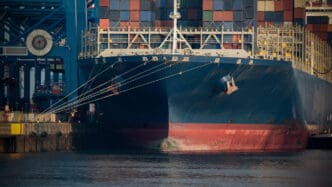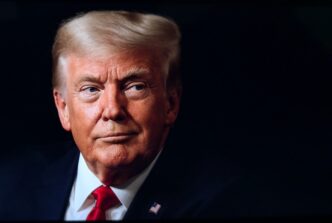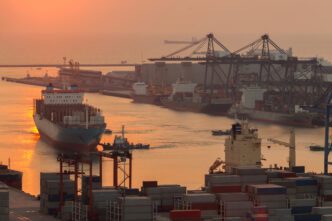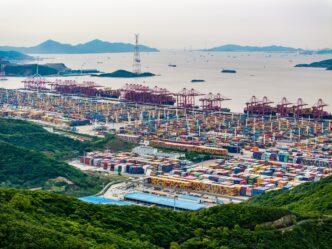KEY POINTS
- The Trump administration has implemented sweeping “reciprocal” tariffs on more than 60 countries, fundamentally reshaping America’s economic relationship with the world.
- The new tariffs are multi-tiered, with negotiated rates for allies like the EU and Japan (15%), higher punitive rates for countries like Brazil (50%) and Canada (35%), and a geopolitical tier for countries like India (25%).
- The administration expects the policy to generate hundreds of billions in revenue and spur foreign investment in the U.S., while critics warn it will lead to higher prices for American consumers and destabilize the economy.
WASHINGTON – A new and disruptive era in global trade began this week as the Trump administration’s sweeping “reciprocal” tariffs on more than 60 countries officially took effect, imposing massive new taxes on imported goods and fundamentally reshaping America’s economic relationship with the world.
The complex, multi-tiered tariff regime, which went into effect at 12:01 a.m. Thursday, is the culmination of months of high-stakes negotiations, threats, and last-minute deals. The White House is casting the move as a necessary step to correct what it deems unfair trade practices, predicting the policy will generate hundreds of billions of dollars in new revenue and spur massive foreign investment in the United States. However, the tariffs have been met with immediate condemnation from key trading partners and dire warnings from economists, who say the new taxes will inevitably lead to higher prices for American consumers, harm small businesses, and risk destabilizing the U.S. economy.
The New Economic Reality: A Multi-Tiered Tariff Wall
The new trade landscape is defined by a complex and, according to critics, “slapdash” patchwork of varying tariff rates. While the rollout has been chaotic, a clear structure has emerged:
- The Negotiated Tiers: Key U.S. allies and major trading blocs managed to negotiate their rates down from more punitive initial threats. The European Union, Japan, and South Korea have secured a baseline tariff rate of 15%, while the United Kingdom has a more favorable 10% rate.
- The Punitive Tiers: Countries that did not secure a deal are facing significantly higher rates. Brazil is now subject to a 50% tariff, Switzerland to 39%, and Canada to 35%.
- The Geopolitical Tier: India faces a 25% tariff, but the administration has also threatened an additional 25% penalty, potentially bringing its total to 50%, directly linked to its continued purchase of Russian oil.
- The Asian Trade Tier: A host of key manufacturing hubs in Asia, including Vietnam, Indonesia, Pakistan, and the Philippines, will face tariff rates of 19% or 20%.
To enforce this new regime, the administration has also announced a potential 100% tariff on semiconductor imports and a 40% penalty on any goods transshipped through a third country in an attempt to evade higher duties.
U.S. Customs and Border Protection (CBP) began collecting the new tariffs on Thursday. In a small concession to businesses, the administration has granted a grace period until October 5th for goods that were already in transit to the U.S. before the deadline, which may be subject to the previous, lower rates.
A Tale of Two Economies: The White House vs. Economists
The administration and the economic community have presented two starkly different visions of what these tariffs will mean for the United States.
The White House is projecting immense confidence. President Trump has praised the tariffs, stating that “billions of dollars” will now flow into the U.S. Treasury. Treasury Secretary Scott Bessent has estimated that the new tariff revenues could exceed $300 billion annually. Furthermore, the administration anticipates that the high cost of exporting to the U.S. will compel countries like Japan, South Korea, and the European Union to invest hundreds of billions of dollars directly into the American economy by onshoring their manufacturing.
Economists, however, are sounding the alarm. They warn that the tariffs are, in effect, a massive tax hike that will be paid for by American importers and, ultimately, passed on to American consumers in the form of higher prices. This could reignite inflation and put a significant strain on household budgets. Small businesses, which make up the vast majority of U.S. importers, are seen as particularly vulnerable, as they have less ability to absorb the increased costs than their larger corporate counterparts.
Early data suggests the tariffs have already had a disruptive effect. In a rush to get ahead of the deadline, importers flooded the country with goods in the first half of the year, causing the U.S. trade imbalance to surge by 38%, a clear sign of the market distortions the policy has created.
The International Backlash
The reaction from the international community has been swift and sharp. India’s Foreign Ministry has already called the new duties “unfair, unjustified and unreasonable.” In a sign of the diplomatic scramble the tariffs have caused, the Swiss president is currently in Washington for last-ditch talks to try and reverse the crippling 39% levy imposed on Swiss goods.
As the new tariffs begin to bite, the world is now watching to see how the global economy will adapt to this new, more protectionist era. The Trump administration has made a high-stakes bet that it can use its economic leverage to force a global realignment of trade in its favor. The coming months will reveal whether that bet pays off, or whether it will trigger the economic pain that so many of its critics have long predicted.








